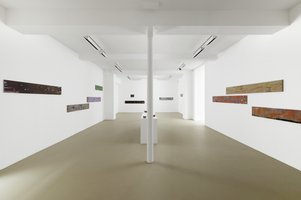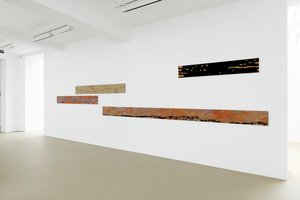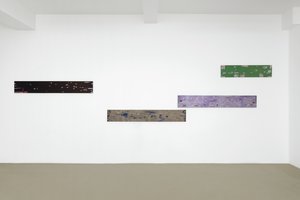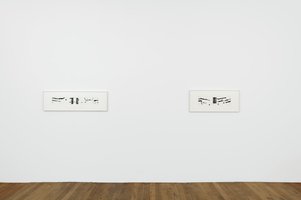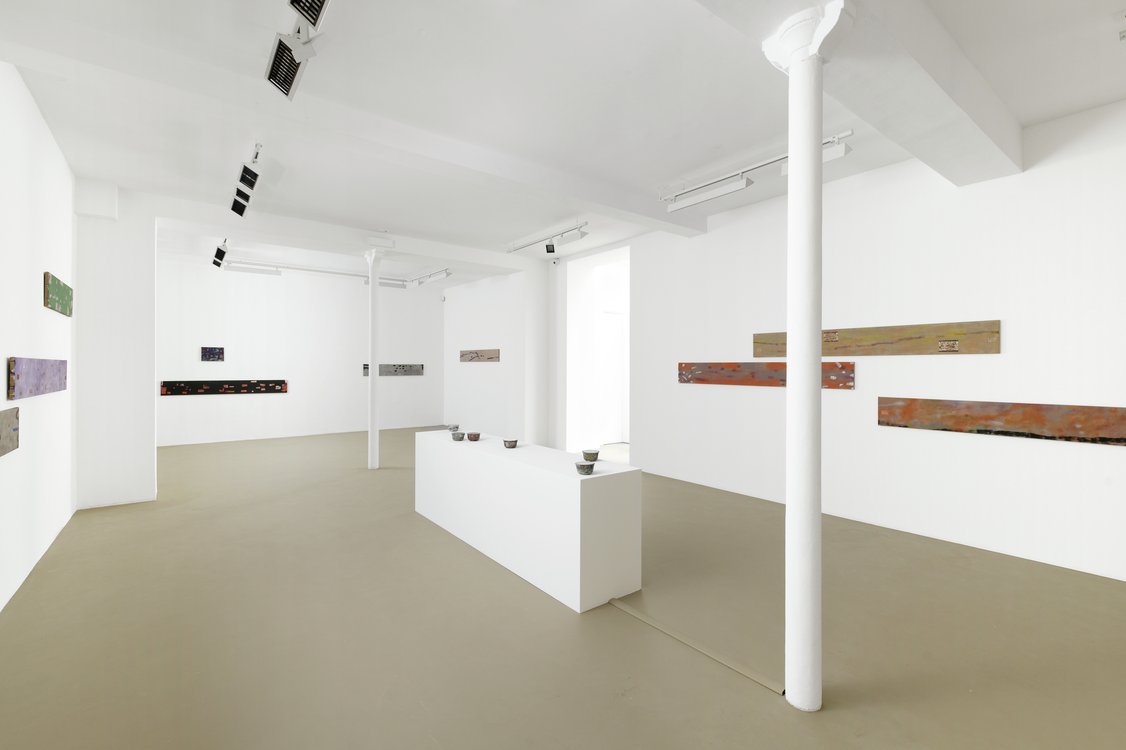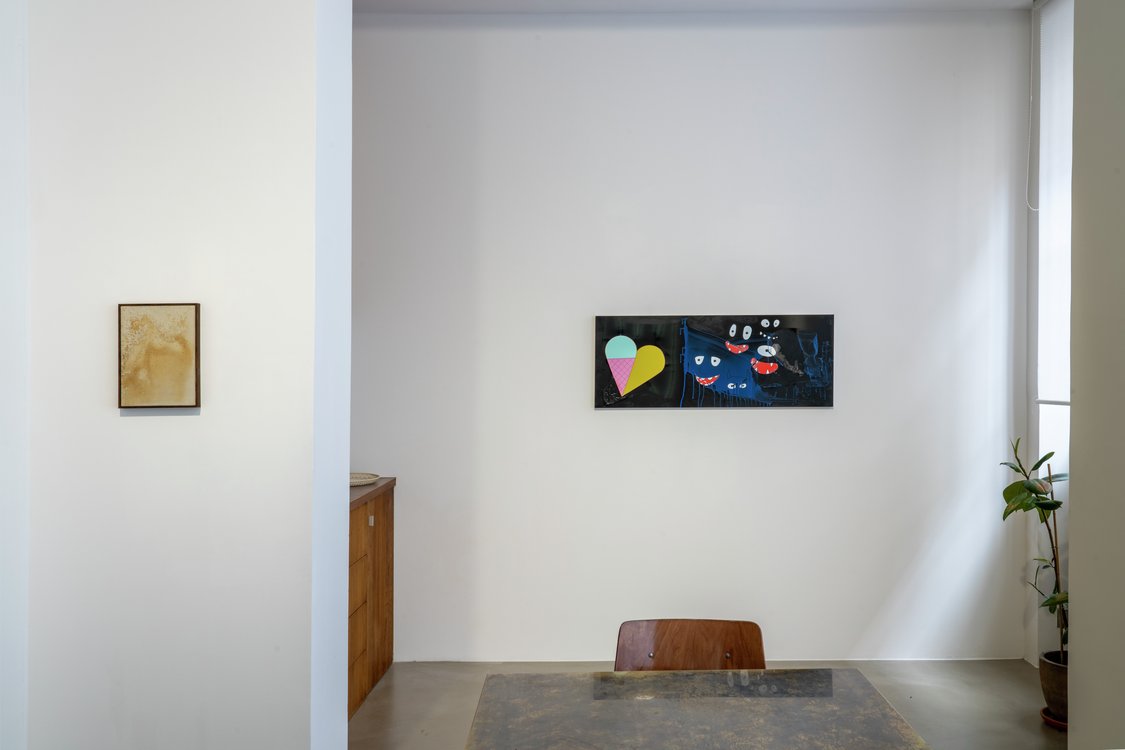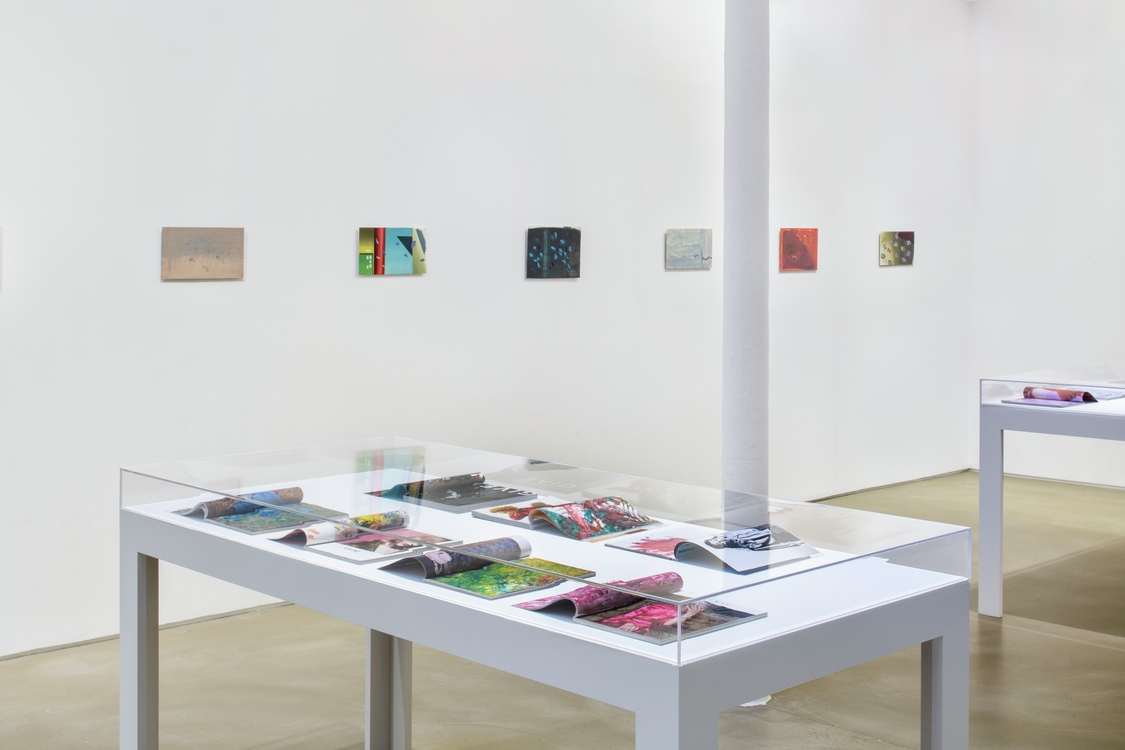Galerie Chantal Crousel is pleased to host Clément Rodzielski's new exhibition.
The elongated paintings in the show are created using the same process: the two ends of the canvas are temporarily joined so as to paint across a continuous loop with neither beginning nor end. This loop is then split, and the medium regains the frontal flatness of a painting.
Each one of these paintings is defined by the cut, both dividing it from itself and making it visible in its totality.
Painting is a space that holds the various marks of its history and presents them timelessly to each successive gaze. Here, following the fluid movement of the paint marks, the eye travels across the canvas and can indefinitely grasp at one end that which is truncated at the other.
The paintings act and reenact the events occurring on their surfaces: brushstrokes that dapple the canvas, lines, overlaps... Elsewhere, the movement of the brush twists and turns, hovering over the caesura. Some of the canvases are punctuated by little inserts, miniatures catching the eye and interrupting, for a moment, the journey across the canvas breadth.
But, at night, when the colors fade into darkness, is the paint still there?
The movement created by the paint marks is circular. In some respects, the paintings are like the flow of streaming images. Like these, the paintings exist and flow in a state of potential permanence. Whether we see the paintings encapsulated by the low light of morning or the neon light of night, whether the eye is caught by one line or another, we always see the paintings within their own movement, their never-ending flow.
One series on paper shows janiform figures (Janus or other two-headed beings). Cut in two, the faces are no longer back to back — one towards the past, the other towards the future — they now face each other. The image stares at itself in a timeless present.
At the center of the exhibition, a set of bowls of instant noodles, an object that becomes a moving image, an anime, as they rotate inside a microwave. The painting runs at the edges, it is endless. Letters are cast u n t i... gradually forming a word that stops, and starts, eternally.
Clément Rodzielski's work often begins with an objet trouvé already conveying an image, or surreptitiously containing its possibility. The artist brands his own painted marks upon it. The process puts a halt to the apparent uniqueness of the image-object, the sensation of permanence, as if uncreated, specific to all merchandise. Adding paint is a way of reclaiming this environment, of rethinking images and objects as décor, of enacting upon them, of inhabiting them. This action has something reflexive about it. The colored marks come to reveal the life of images, the brief spell of object-commodity, but also the prolonged life of imagination and language deployed ad infinitum.
In the exhibition, painting is contrasted with other images, that of the immaterial ones which temporarily appear on screens.
The temporality of these paintings offers a reverse shot to that of the flow of loops. Information, commercial or personal images... Indefinite repetition, unrelated to the present, elusive, outside the box of time. The paintings respond to images that no longer impinge upon physical space but are played and replayed, always within reach yet always untouchable.
Simon Bergala

